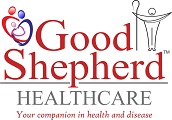
In the 18th Century when Voltaire said, “The art of medicine consists of amusing the patient while nature cures the disease”, he was not far from the truth. He is neither far from the reality today.
Medicine – we are taught is an ‘Art’ and a ‘Science”. A marriage of the art and the science of healing – The ‘Mr’ and the ‘Missus’ of Healing ! Our mission as suggested by Hippocrates being designed to “Cure sometimes, treat often and comfort always.”
Medicine -as it is practiced today, is not the same as in the times of Hippocrates. Medicine has progressed in ‘leaps and bounds’. Newer innovations and inventions, have made medical practice safer and accessible.
There is a lot of work still to be done on its affordability. However, all breakthrough innovations, do not condone the truth that Medicine has ‘de-facto’ lost some shine of its ‘Nobility’ , and the ‘Human Touch’ has often taken a backseat. And its the ‘Mistress’ – who has taken a prime position.
The Mistress – ‘Economics’, has won over ‘Ethics’, and ‘Profits’ have taken a precedence over ‘Patient’ and ‘Provider’ experiences.
Its in the area of the financial aspects of a medical practice that medical education – at most times, falls short. Medical School doesn’t teach us about the Economics of Medicine. It results in the so-called ‘crème de la crème’ of the society, entrusting all the financial decision making in the domain of the ‘number crunchers’. It’s here that the ‘healthcare wheel alignment and balancing’ amongst the patients, the healthcare providers, the healthcare managers and the healthcare promoters ; goes for ‘toss’. The result is a ‘wobbly-ride’ for all stakeholders.
In the present day, I believe that it’s critical for any practicing medical professional to know the intricacies of :
- The design of the schedule of charges
- The design of treatment packages for medical, interventional and surgical treatments,
- The tips, tricks and tactics of ‘cost-cutting’ and optimal use of financial and human capital,
- The economics of the process of optimally procuring, maintaining and utilising equipment and consumables,
- The principles of recruiting, training and retaining quality staff.
We cannot let it all be passed on as the headache of the management team – as most of them are not well-versed with the practice of medicine. The management team likewise, should equip themselves with the essential knowledge required to facilitate their synchrony with the ‘treating team’. It takes ‘two to tango’ or else it’s going to be a one-sided ‘Waltz’ – with the patient in a tizzy !
Healthcare definitely needs to earn revenues to sustain and grow. A collaborative team approach of the medical and accounting teams, is the key to the design and deliver optimum packages. It’s a critical component of the process of crafting positive patient experiences.
Its absolutely essential to mentor doctors with the principles essential to face the trials and tribulations of professional medical practice. To ensure that they utilize their limited resources of time, effort and money – optimally, and live personally and professionally fruitful lives.
I may not have had the privileged a roadmap – a framework to a tips, tricks and tactics to the perfect blend of personal and professional life for a healthcare professional. But I had the privilege of learning the ropes – sometimes the hard way. Today, its a pleasant experience to have positive mentoring discussions with professionals at various levels in healthcare . I have incorporated my ‘real-life’ learnings in ‘The ‘Art’ of Medicine Mentoring Program for Healthcare Professionals”, and my book, The’Art’ of Medicine. an amazon and kindle exclusive.
As for Voltaire’s recommendation, he did not mean ‘amusing the patient’ alone as a requisite for crafting of delightful healthcare experiences. Voltaire was merely suggesting that patients in a positive frame of mind, derive the maximal benefit from a blend of astute clinical assessment and treatment.
Cheers !




